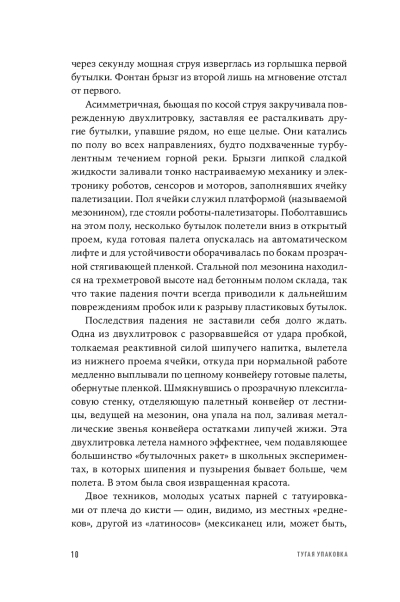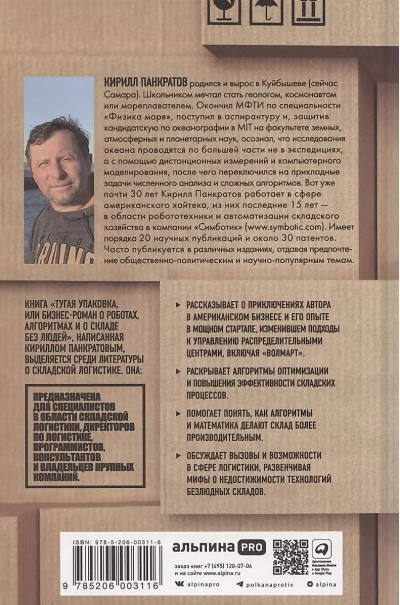Tight packaging, or a business novel about robots, algorithms and a warehouse without people
14.99 €
The only thing available 3
Imagine a huge warehouse filled with thousands of boxes of goods. Each box must be moved to the right place in storage and then stacked on a pallet. It's a complex process that requires a lot of low-efficiency manual labor and comes with inevitable errors.
Simbotic has tried to fully automate the warehouse process, including the palletizing of boxes. However, the journey from concept to a working system took many years. The first versions of the automatic system worked very poorly, their productivity was even lower than that of a manual warehouse. One of the most critical flaws of the first system was the very poor quality of the pallets planned by the software algorithm and stacked by the robots.
When the deadlock in the development of the first system became obvious, Kirill Pankratov managed to solve a very difficult mathematical problem of stacking boxes into dense and stable pallets, and the team of programmers under his leadership - mostly Russian-speaking - quickly implemented this very complex algorithm into the working code. This (as well as other system optimization processes in which the author had the opportunity to participate) played a crucial role in making the automated Simbotica system work like clockwork. Boxes moved quickly and accurately, errors and malfunctions became rare, and productivity and storage density in the warehouses reached unprecedented heights.
The introduction of artificial intelligence was a turning point for Simbotics: the small startup turned into an industry leader, had a successful IPO, and began to innovate the delivery and distribution system for large customers.
What is really behind the successful development of an algorithm, how many mistakes can be made on the way to the result, and what it is like for a Russian scientist to work in an American engineering company - Kirill Pankratov tells us about this in his book.
Simbotic has tried to fully automate the warehouse process, including the palletizing of boxes. However, the journey from concept to a working system took many years. The first versions of the automatic system worked very poorly, their productivity was even lower than that of a manual warehouse. One of the most critical flaws of the first system was the very poor quality of the pallets planned by the software algorithm and stacked by the robots.
When the deadlock in the development of the first system became obvious, Kirill Pankratov managed to solve a very difficult mathematical problem of stacking boxes into dense and stable pallets, and the team of programmers under his leadership - mostly Russian-speaking - quickly implemented this very complex algorithm into the working code. This (as well as other system optimization processes in which the author had the opportunity to participate) played a crucial role in making the automated Simbotica system work like clockwork. Boxes moved quickly and accurately, errors and malfunctions became rare, and productivity and storage density in the warehouses reached unprecedented heights.
The introduction of artificial intelligence was a turning point for Simbotics: the small startup turned into an industry leader, had a successful IPO, and began to innovate the delivery and distribution system for large customers.
What is really behind the successful development of an algorithm, how many mistakes can be made on the way to the result, and what it is like for a Russian scientist to work in an American engineering company - Kirill Pankratov tells us about this in his book.
See also:
- All books by the publisher
- All books by the author











